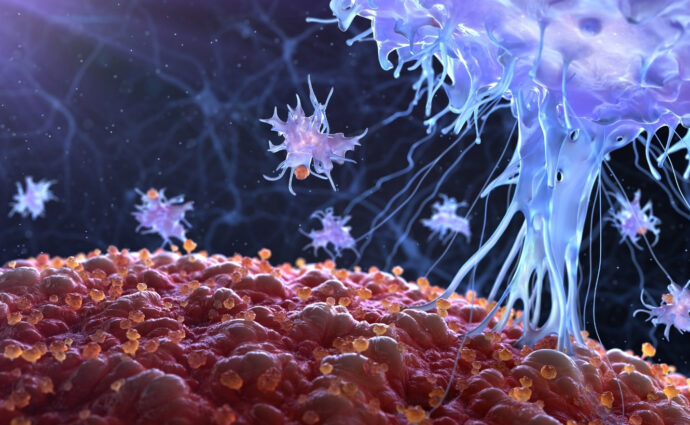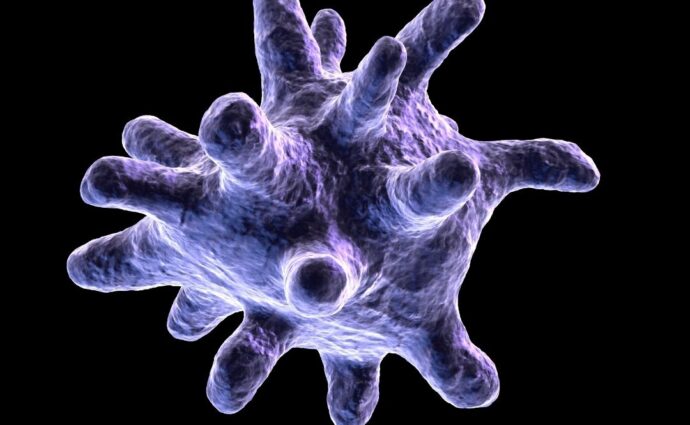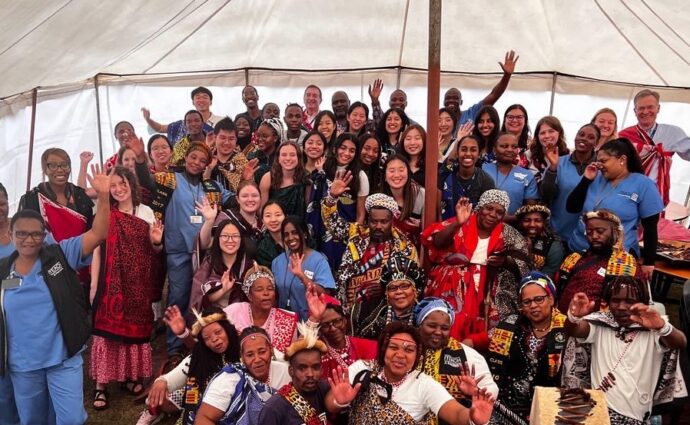Date: September 29, 2022 By: Emily Makowski

Key Takeaways
BOSTON – The development of a durable and effective HIV vaccine is still elusive after almost forty years of research, but a new study testing a germline-targeting vaccination strategy provides insights that may bring scientists one step closer. In the past decade, broadly neutralizing antibodies (bnAbs) have revolutionized the field of HIV vaccine development. These antibodies can neutralize a broad range of HIV isolates by binding vulnerable regions—generally on the HIV surface protein, Envelope—that are highly conserved across different viral strains. A new study in Immunity from the Ragon Institute of Mass General, MIT, and Harvard and Scripps Research tests novel vaccine candidates and improves scientists’ understanding of how to elicit bnAbs through vaccination and improve B cell immune responses.
Vaccines to induce bnAbs face several challenges; for one, most B cells capable of producing bnAbs do not bind well to the HIV envelope. The strategy to overcome that is called germline targeting. “We first activate specific B cells – the ones capable of developing into bnAb producers. Once we have activation, the goal is to then guide their maturation towards producing antibodies that are more and more bnAb-like using immunogens that progressively resemble a mature envelope,” explains Eleonora Melzi, PhD, DVM, who completed this research as a postdoctoral research fellow at the Ragon Institute.
In the new research, the scientists investigated approaches to elicit bnAbs that target a vulnerable region of the HIV envelope called the V2-apex, which is the tip of the viral protein on the surface of HIV. Antibodies to this region could block viral entry and prevent infection. The researchers focused on one V2-apex-targeting bnAb, PCT64, which was originally isolated from a patient. Using a CRISPR/Cas9 approach, they generated humanized mice with B cells expressing human PCT64 precursors, which are “found pretty frequently in the human population,” says Facundo D. Batista, PhD, associate director and chief scientific officer of the Ragon Institute, who served as co-senior author of the paper. “Models of this type have proven to be a very effective preclinical system for evaluating not just germline-targeting immunogens for HIV, but also for a range of other infectious diseases, such as malaria and SARS-CoV-2. We can quite directly observe whether the key B cells are activated and whether they acquire the right kind of mutations,” he says.
The immunogens used in the study, ApexGT, were developed in the laboratory of co-senior author William Schief, PhD, of Scripps Research, in a process described in a companion article in the same issue of Immunity. The first version of the immunogen, which was delivered as a protein, was good at inducing mutations in B cells in vivo but could not trigger the activation of rare B cells that could produce bnAbs – its affinity wasn’t high enough. A second-generation, higher affinity protein activated more B cells and induced more mutations, but to improve rare B cell activation, the researchers turned to Moderna. They provided an mRNA lipid nanoparticle – much like that used in the Moderna SARS-CoV-2 vaccine. Compared to the protein-based immunogen, the mRNA immunogen improved the activation of rare B cells, suggesting that mRNA could help overcome the challenges posed by the rarity of bnAb precursors in humans.
This work is a potential first step toward a germline-targeting vaccine to the V2-Apex region of the HIV envelope. “We and our collaborators are building on this approach, developing and testing immunogens to drive the later stages of bnAb maturation,” Batista says. With UNAIDS reporting 1.5 million new HIV infections in 2021 alone, vaccines for HIV remain an urgent public health need.
This research was supported in part by the IAVI Neutralizing Antibody Center through the Collaboration for AIDS Vaccine Discovery (CAVD) grants OPP1084519, OPP1147787, INV-034657, OPP1196345/INV-008813, OPP1115782/INV-002916 and INV009585 funded by the Bill and Melinda Gates Foundation and CAVD, the National Institute of Allergy and Infectious Diseases (NIAID) UM1 Al100663 (Scripps Center for HIV/AIDS Vaccine Immunology and Immunogen Discovery) and UM1 (Scripps Consortium for HIV/AIDS Vaccine Development), the Ragon Institute of Mass General, MIT, and Harvard, and by an EMBO fellowship ALTF 84-2018.
About the Ragon Institute of Mass General, MIT, and Harvard
The Ragon Institute of Mass General, MIT, and Harvard was established in 2009 with a gift from the Phillip T. and Susan M. Ragon Foundation, with a collaborative scientific mission among these institutions to harness the immune system to combat and cure human diseases. Focusing on global infectious diseases, the Ragon Institute draws scientists, clinicians and engineers from diverse backgrounds and areas of expertise to study and understand the immune system with the goal of benefiting patients. For more information, visit www.ragoninstitute.org.
About the Massachusetts General Hospital
Massachusetts General Hospital, founded in 1811, is the original and largest teaching hospital of Harvard Medical School. The Mass General Research Institute conducts the largest hospital-based research program in the nation, with annual research operations of more than $1 billion and comprises more than 9,500 researchers working across more than 30 institutes, centers and departments. In August 2021, Mass General was named #5 in the U.S. News & World Report list of “America’s Best Hospitals.” MGH is a founding member of the Mass General Brigham health care system.
Media contact: Emily Makowski, 617-468-8970, emakowski@mgh.harvard.edu

Their findings, to be published in Cell next month, reveal how the virus manipulates immune system processes to avoid destruction by natural killer (NK) cells, a type of white blood cell that is crucial for fighting viral infections.

The lab of the Ragon Institute faculty member Hernandez Moura Silva, PhD, recently published a review in Science Immunology regarding resident tissue macrophages (RTMs), shedding light on their multifaceted roles in organ health.

After three years off due to the COVID-19 pandemic, the Ragon-MIT course HST.434 returned this January to provide 24 students a once in a lifetime learning experience